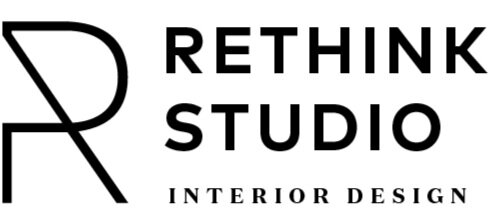Modern vs Contemporary: What’s the difference?
Designers, writers, and artists all throw around terms to describe what’s in style or fashionable, and two words that seem to be forever linked are modern and contemporary.
Should they be linked? Though often referenced the same way, Rethink firmly believes in church and state when it comes to modern and contemporary: They are actually very different!
Modern design by definition is a movement. Cropping up in the early twentieth century, modern hit its stride from the 1920s to 1950s with influences from Scandinavian and German Bauhaus design. One of its main characteristics was a return to handcrafted pieces and a favoritism for work that was uniform and sleek. Unsurprisingly, this movement is having a resurgence, and we have long been inspired by its simplicity.
Take this living room for example: Here, warm woods, crafted seating, and Asian design elements come together in a pure representation of 1950s modern style. The craftsmanship of the custom 2-seater, which incorporates the perfect place for magazines and cocktails, was designed in-house to bring function and comfort into the space. We also added a vintage screen and butterfly walnut wood wall panelling for a period appropriate space. Together, the design elements represent a room that is intended for reading, entertaining, and lounging and hits all the benchmarks that we associate with the modern movement.
Contemporary, however, is less movement and more trend. Coined in the 1970s to describe whatever is fashionable or in the moment, it often borrows heavily from other design styles like modern (and minimal, Scandinavian and others). It’s ever-changing, which makes it hard to pin down to any specific style.
But for many people, contemporary can also feel unfashionable because the term often carries with it the design trends of decades not long past. In many ways, contemporary can conjure up images of chrome, pops of color, and overly trendy pieces, sometimes blending in styles from the 80s and 90s for designs that are long outdated.
When we design with contemporary elements in mind, the spaces are more often than not kitchens or bathrooms, which require the latest fixtures and appliances to be as functional as possible. This kitchen is our purest form of contemporary design, with high tech elements and a streamlined aesthetic. We chose flat-panelled doors with gray wood veneers and a backsplash with a mechanical cabinet door to hide the spices within, and added a pop of color via yellow kitchen chairs.
But great design comes from layering and we when we designed this bathroom, we kept both contemporary elements and modern simplicity in mind. The striking feather wallpaper paired with the asymmetry of the mirror and the glossy antler lamp all point to a very trendy aesthetic, but when you add in the warm woods and custom vanity, the touches of modernity illuminate a space that is both functional and beautiful.
We’re all about breaking the rules, so instead of getting pigeonholed into one aesthetic that will quickly date itself, we balance pieces that are simple and well made with interior architecture that exudes character and balance. That’s what stands the test of time, and that’s what keeps the integrity of a space feeling fresh and timeless.



